L47 – Alphonsus Dark Spots

| Scope: | Altair 250mm f/5.3 |
| Camera: | ZWO ASI 183MM Pro |
| Mount: | iOptron CEM120EC |
| Filters: | |
| Exposure: | 12 fps sec In capture crop 1280×1024 |
| Processing: | This was a 3000-frame stack image with an in capture 1280 x 1024 pixel crop of my ASI 183 sensor. This gave a frame rate of just over 13 FPS and took 228 seconds to complete.Processed in Pixinsight using MLT to presharpen, before running it through BlurExterminator for the final finish. . |
| Other Comments | This crater is known for its ‘Dark Haloed’ craters. These are dark spots formed by the release of dark volcanic material from below, spreading over the much lighter material of the surface. These are called LPD’s or Lunar Pyroclastic Deposits. The image shows 5 dark spots that you can see on LRO images. I can see two parallel lines running N/S just to the left West of the central peak, but the rille to the East in LRO is completely invisible in my image. I can just make out 6 of the small craterlets within the crater basin. Of these, there is Alphonsus A, Alphonsus Y, Alphonsus J, Alphonsus G, Alphonsus L. The terraces look quite worn. is this due to collapse? There also appears to be a very wide breach in the Southern wall, like there has been a breach of lava. It is famous for the probe Ranger 9 which was launched on 21st March 1965 at 21.37(UT) from Cape Kennedy. It took 5814 pictures of the moon’s surface before crashing into Alphonsus on the 24th March 1965 at 14.08. |
| Date Taken: | 30/05/2023 |
Lunar Eclipse
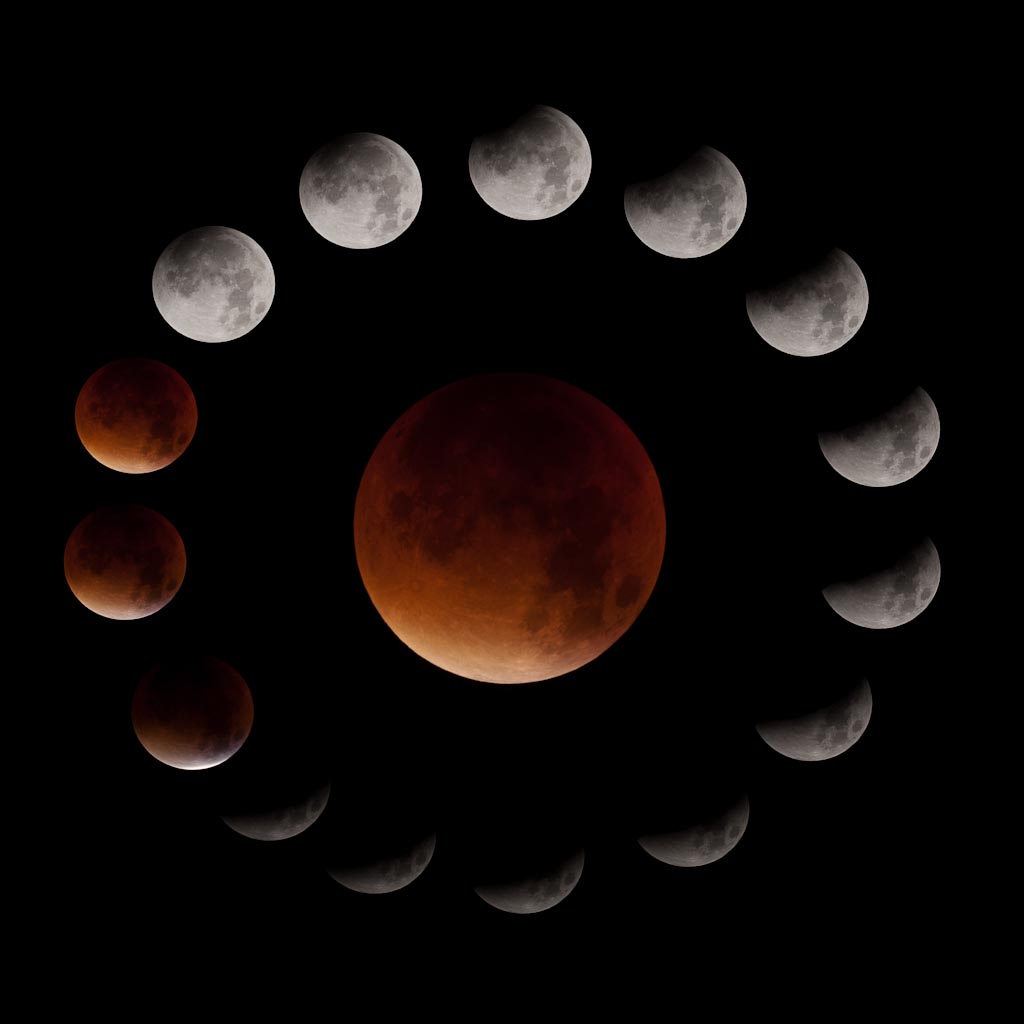
| Scope: | TMB 80mm APO Refractor at f/6 |
| Camera: | Nikon D80 DSLR |
| Mount: | Losmandy G11 – Gemini Series IV GoTo |
| Filters: | None |
| Exposure: | 73 x 60sec light frames Dark subtracted, No Flats. |
| Processing: | Apart from the considerable faff on getting all the images into this montage, the only processing done to the image as a whole, was some very gentle curves and a mild High Pass sharpen. |
| Other Comments | Nothing much to say about these, but I decided to use my Nikon D80 fitted to the TMB80. The big RC would have been nice, but with the D80’s chip, I would have had to have shot two images to get the full Lunar disc in, which would have added another layer of complexity to the operation. The earlier images were all shot at 1/350 of a second, but towards the end I found the exposure has to be increased to over 30 seconds . The last few images taken of totality, were shout through quite a bit of cloud, but this doesn’t seem to have affected the image much. I guess the cloud acts a little like an ND filter if nothing else, but I was surprised that image sharpness didn’t seem to be particularly affected. |
| Date Taken: | 28-09-2015 |
Clavius
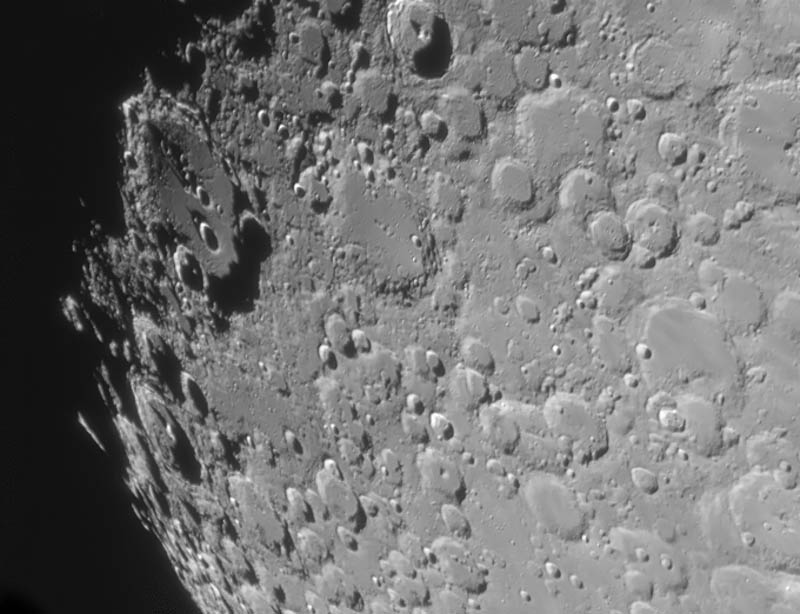
| Scope: | Altair Astro 254mm F/8 Ritchey-Chrétien |
| Camera: | Imaging Source DMK 21AU04 Webcam |
| Mount: | Losmandy G11 – Gemini Series IV GoTo |
| Filters: | None |
| Exposure: | 4000 frame AVI file |
| Processing: | Autostakkert 2.1. 4000 frame avi. Selection of the best 10% of those frames. Resulting stack was then run through Registax 6 where I applied level 1 and 5 wavelet sharpening, before loading the file into Photoshop for the usual curve processing. Thinking back on it now, I realise I should have done it the other way around – general processing first and sharpening last before saving. This is one of image processing No-No’s and I normally never ever do it for my terrestrial images, so I’m at a loss as to why it’s happened here. Anyway slapped wrists all round. |
| Other Comments | The view of Magnius crater had completely changed in 24 hours. All the shadows and details within the crater had gone as sunlight flooded the whole crater. I decided to image the area with the webcam anyway, and managed to get a much more detailed image of the area and a spectacular view of Clavius in particular. The quality of the image improved with a small improvement of transparency over the night before. |
| Date Taken: |
Mare Imbrium
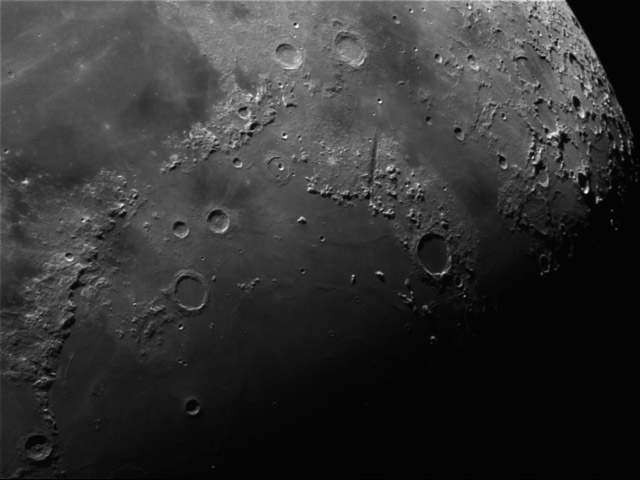
| Scope: | TMB 80mm APO Refractor at f/6 |
| Camera: | Imaging Source DMK 21AU04 Webcam |
| Mount: | Losmandy G11 – Gemini Series III GoTo |
| Filters: | None |
| Exposure: | A single 2000 frame AVI |
| Processing: | Rummaging through the files on the laptop, I came across some avi’s taken last year for a Moon mosaic I was working on. With nothing better to do, I reloaded this section into Registax six to try and eak out a little more detail. What struck me was the radial ejecta from Aristillus which I hadn’t noticed during the original processing. |
| Other Comments | |
| Date Taken: | 11-05-2011 |
The Moon – Unfinished Mosaic
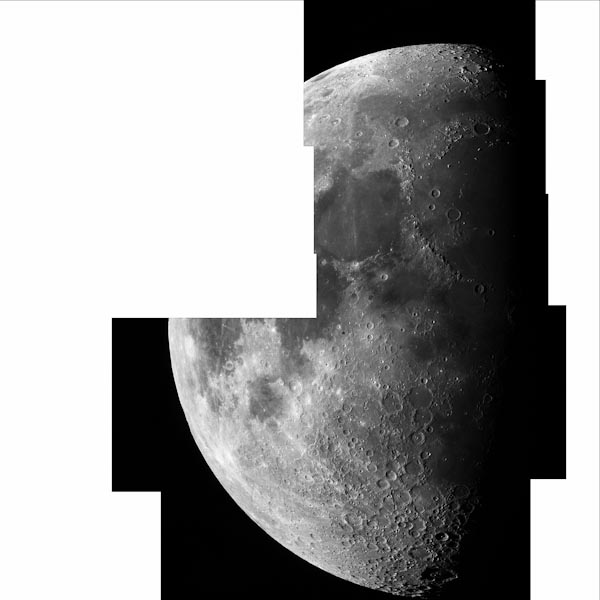
| Scope: | TMB 80mm APO Refractor at f/6 |
| Camera: | Imaging Source DMK 21AU04 Webcam |
| Mount: | Losmandy G11 – Gemini Series III GoTo |
| Filters: | None |
| Exposure: | Seven x 2000 frame avi |
| Processing: | |
| Other Comments | |
| Date Taken: | 11-05-2011 |
The Moon
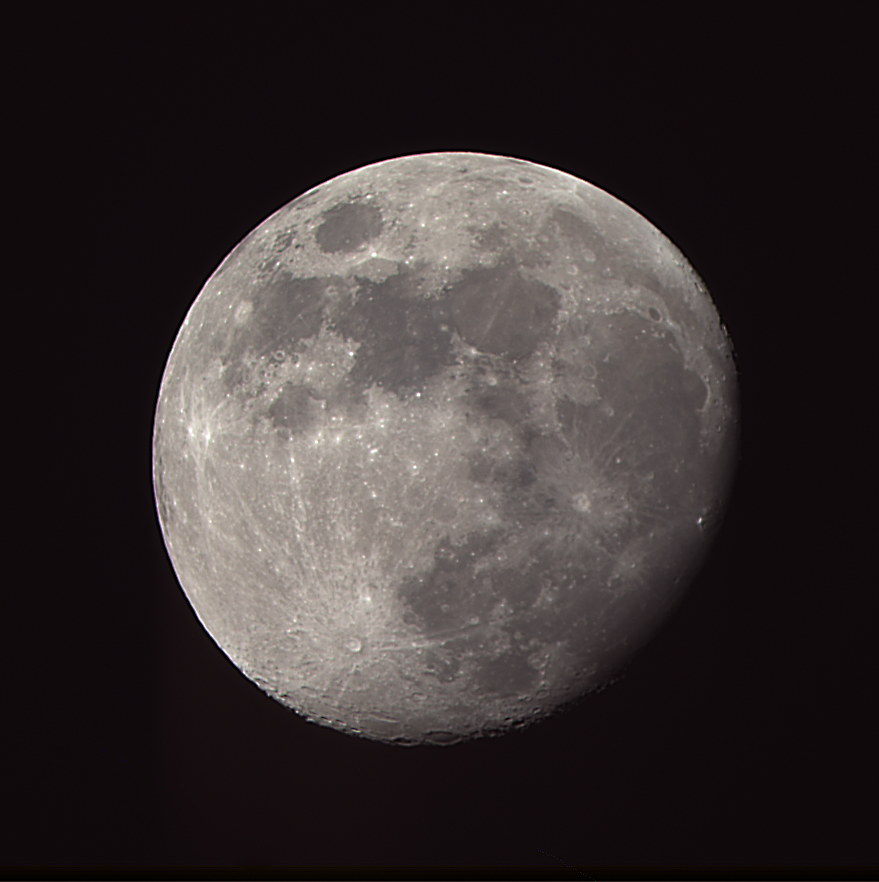
| Scope: | TMB 80mm APO Refractor at f/6 |
| Camera: | SBIG 2000 XM |
| Mount: | Losmandy G11 – Gemini Series III GoTo |
| Filters: | SBIG CFW8 |
| Exposure: | LRGB Luminance 60 x 1:1000 sec Red 20x 1:1000sec Green 20x 1:1000sec Blue20x 1:1000sec All Bin 1×1. |
| Processing: | The 20 of each of the RGB images were aligned and stacked using Registax to create a synthetic luminance layer and given a a minor wavelet process on the 1:1 layer. The RGB elements were processed in the same way. Alignment and RGB combination of the LRGB components were made in ImagesPlus. and the final processing made on Photoshop CS2 |
| Other Comments | |
| Date Taken: | 01-09-2015 |